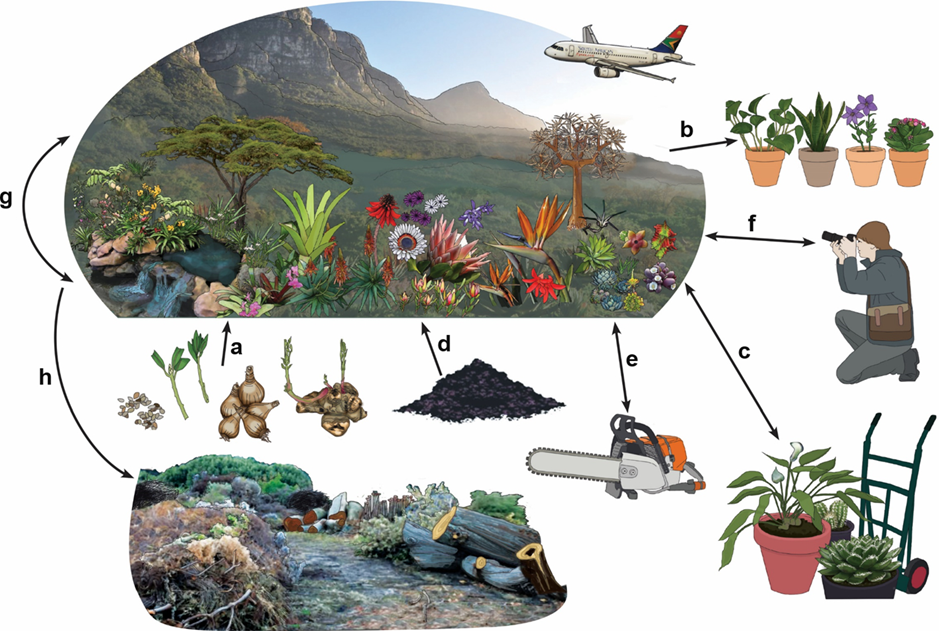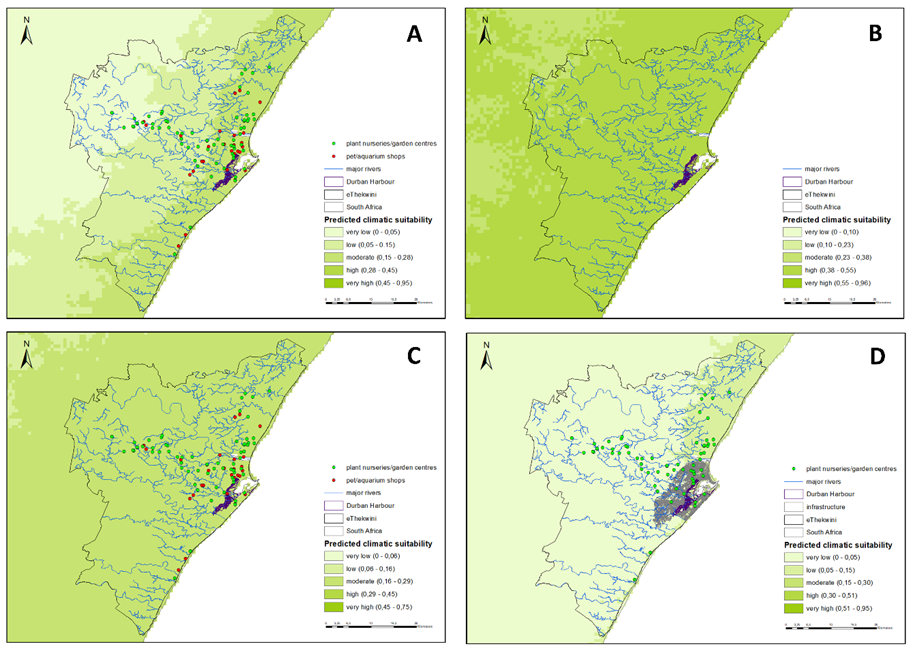
Eight biosecurity hazards presented by botanical gardens and the opportunities they provide to improve management and communication. Materials going into the gardens such as seeds, tubers, cuttings, mulch, compost and soil could potentially transport and introduce pests to the gardens (a, d). On the other hand, materials leaving the gardens such as sold plants, prunings and dead plants can potentially transport pests established in the gardens to the external environment (b, h). Other activities of the gardens, including visits by local and international visitors (f), the use of machinery and equipment (e), and plant exchange between botanical gardens (c) may also serve as pathways of movement of pests to- and from the gardens. Additionally, pests may naturally disperse between managed estates of the gardens and the adjacent natural vegetation (g). (Graphic from Wondafrash et al. 2021)
A recent paper, led by Dr Mesfin Gossa and published in Biodiversity and Conservation, reviews the value as well as the hazards associated with botanical gardens for biosecurity at a global scale.





